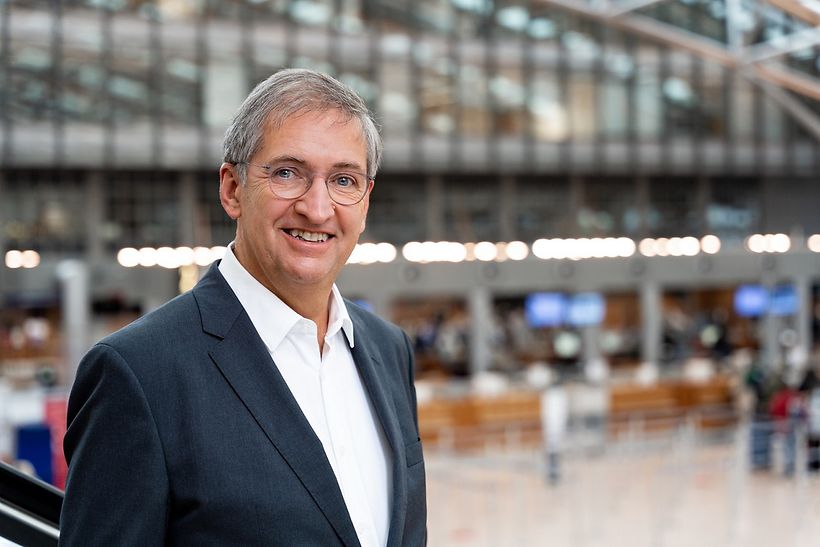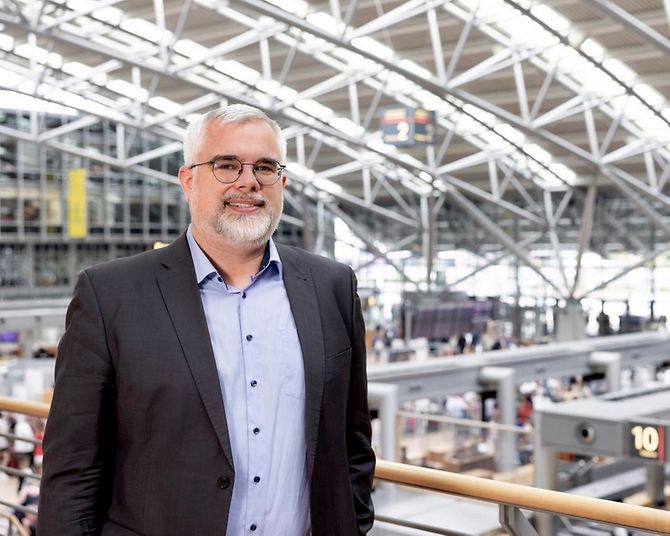Hamburg Airport and Christchurch International Airport enter into joint climate partnership
CO2 emissions to be reduced to zero / Partner airports work on infrastructure for the use of green hydrogen in aviation
18.10.2022
New partnership for sustainable airport operations: Hamburg Airport and New Zealand's Christchurch Airport will pursue their ambitious climate goals together in the future. Both airports have taken a pioneering role in decarbonisation in their country. Together, they now want to actively work towards the Net Zero climate goal, with a special focus on the future use of green hydrogen. By the end of 2035, Hamburg Airport aims to completely eliminate carbon dioxide emissions (Net Zero) and develop its own hydrogen infrastructure.
"We stand by our responsibility: sustainable airport operation with renewable energies is a building block for climate protection in air transport - we will consistently continue on this path. Keywords are wind power, solar energy, green hydrogen. Which solutions are suitable for airports and their respective locations must be individually examined and prepared. We are therefore all the more pleased to have gained an experienced partner in Christchurch Airport. On an international level, we can bundle our know-how to work towards CO2-free airport operations and a future with sustainably operated aircraft," says Michael Eggenschwiler, CEO Hamburg Airport.
“We are both openly ambitious in supporting aviation to decarbonise,” says Malcolm Johns, Chief Executive of Christchurch Airport. “We realise this will take partnerships like ours to do this. We have enjoyed monthly online meetings with Hamburg Airport team members for some time now, sharing information and knowledge while discussing and supporting each other’s goals and achievements. It is time now to set ourselves some more joint goals.”
18,500 kilometres apart - but with common climate goals
Hamburg Airport and Christchurch International Airport have a very special geographical connection: At around 18,500 kilometres apart, they are located exactly on opposite sides of the globe. Within their sphere of influence, both airports have taken on a pioneering role in environmental protection. Hamburg Airport became the first major airport in Germany to operate in a CO2-neutral manner at the end of 2021 and has been raising awareness of green alternatives throughout the industry for more than 20 years. In late 2020, Christchurch was recognised as world leading in airport decarbonisation when it became the world’s first airport to achieve Airport Carbon Accreditation Level 4. The airport continues to address emissions reduction, ahead of science-based targets aligned with limiting global temperature rise to 1.5 degrees.
With this cooperation, both airports are now pooling their many years of knowledge and jointly striving to achieve the goal of completely eliminating carbon dioxide emissions and taking on a pioneering role for net-zero aviation in their country. Both partners want to actively prepare and promote the future use of green hydrogen as an emission-free energy carrier in aviation and exploit synergy effects. This involves both H2-powered vehicles on the ground and hydrogen-based aircraft propulsion systems to enable a sustainable future for aviation. In building a hydrogen infrastructure, airports face the challenge of developing suitable technical storage options - including for cryogenic liquefied hydrogen, the use of which in aviation appears possible by 2035. In this context, the use of green hydrogen for small aircraft will also have to be investigated.
In addition, technical and operational solutions are to be jointly identified with which CO2 emissions can be further reduced. Among other things, both airports see great potential in company-owned energy parks. Christchurch Airport will rely on photovoltaics in its 400 hectare Kōwhai Park energy park announced last December and on track to be New Zealand’s largest solar energy park. Hamburg Airport sees opportunities in the use of renewable wind power, among other things for the production of green hydrogen in the region.
Even before Hamburg Airport and Christchurch International Airport decided to enter into a formal partnership, they exchanged information about their environmental activities on a monthly basis. They were networked by the German-New Zealand Centre for Green Hydrogen, Research, Networking and Outreach, based at the University of Otago, New Zealand. It was developed under the co-leadership of Dr. Paul Jerabek (Institute for Hydrogen Technology, Helmholtz Centre Hereon Hamburg, Germany) and Prof. Sally Brooker (University of Otago, Dunedin, New Zealand). Commenting on the cooperation agreement between Hamburg Airport and Christchurch International Airport, Prof. Sally Brooker says: "We look forward to continuing to support and facilitate the rapid development of both airports' zero-emissions ambitions, particularly with regard to green hydrogen."
About Hamburg Airport:
Hamburg Airport is the largest international airport in northern Germany, and the fifth largest in Germany overall. Hamburg Airport’s large catchment area, with its substantial passenger potential, is extremely interesting for all airlines. At present, around 50 airlines fly direct to some 115 domestic and international destinations from Hamburg. Approximately 1,000 destinations worldwide can be reached with only one connecting flight. Beyond this, Hamburg Airport is a “city within the city”, an attractive place to visit with around 60 shops and restaurants, 10 travel agents, and leisure activities. Hamburg Airport is equipping itself to face the challenges of the future of aviation with a modern infrastructure.
Hamburg Airport // Communications Department
Janet Niemeyer
E-Mail: presse@ham.airport.de
Internet: www.hamburg-airport.de
About Christchurch International Airport:
Christchurch Airport is the international gateway to the South Island of New Zealand and a major driver of its regional economy. The airport became the first in the world to achieve Level 4 decarbonisation accreditation under the Airports Council International programme. It’s now working to enable other businesses, including airlines, to decarbonise at the fastest possible rate. A core focus is on developing renewable energy precinct Kōwhai Park on 400-hectares of land just behind its runways to power the new generations of electric and green hydrogen aircraft – including Heart Aerospace’s ES-30.
Christchurch Airport // Press office
Yvonne Densem
E-Mail: yvonne.densem@cial.co.nz
Internet: www.christchurchairport.co.nz
Contact persons for journalists / media
-
Telefon:
+49 (0)40 5075 3611E-Mail:
presse@ham.airport.de -
Telefon:
+49 (0)40 5075 3615E-Mail:
kbromm@ham.airport.de -
Telefon:
+49 (0)40 5075 3680E-Mail:
jniemeyer@ham.airport.de -
Telefon:
+49 (0)40 5075 3671E-Mail:
pwolf@ham.airport.de






